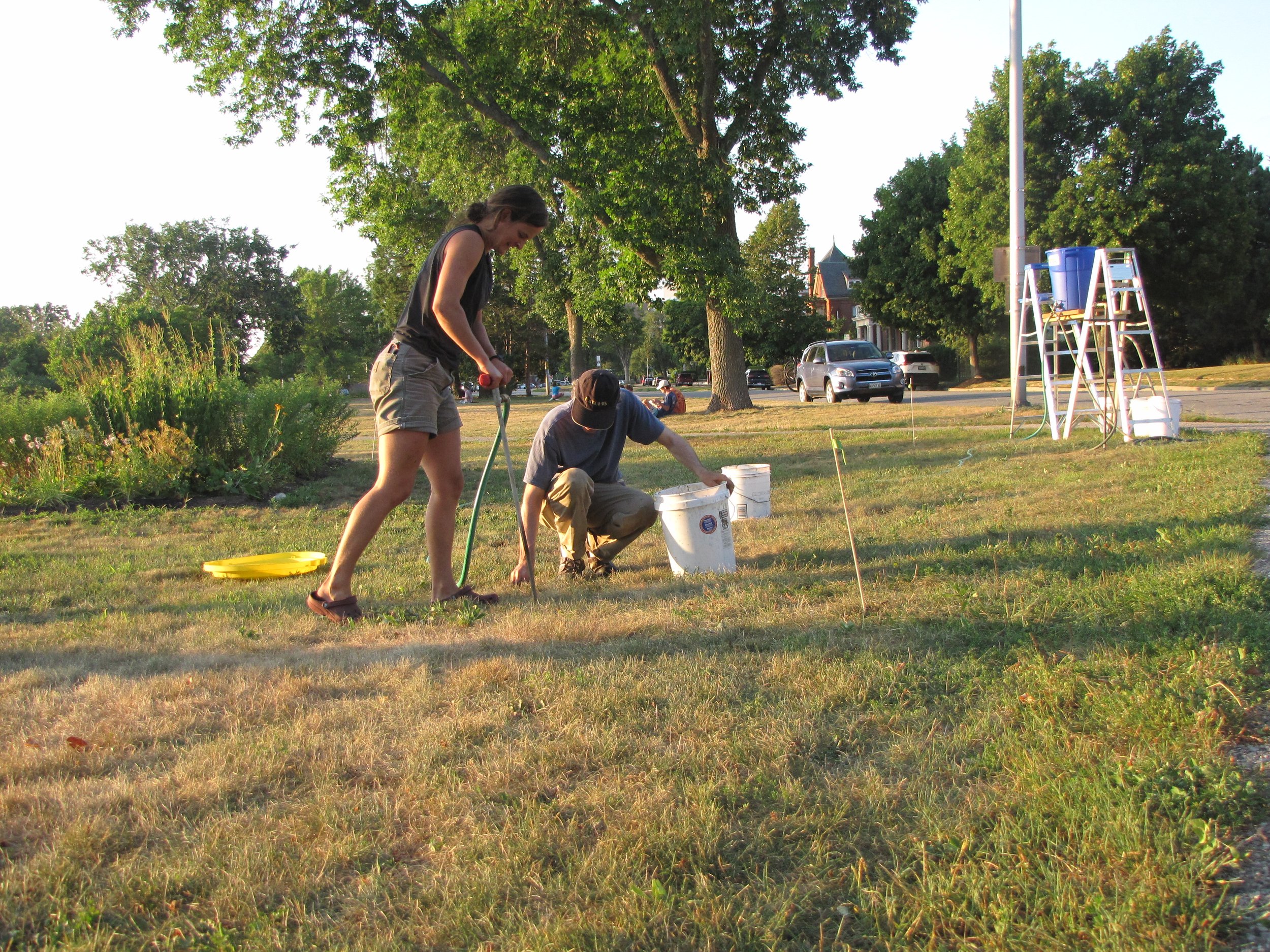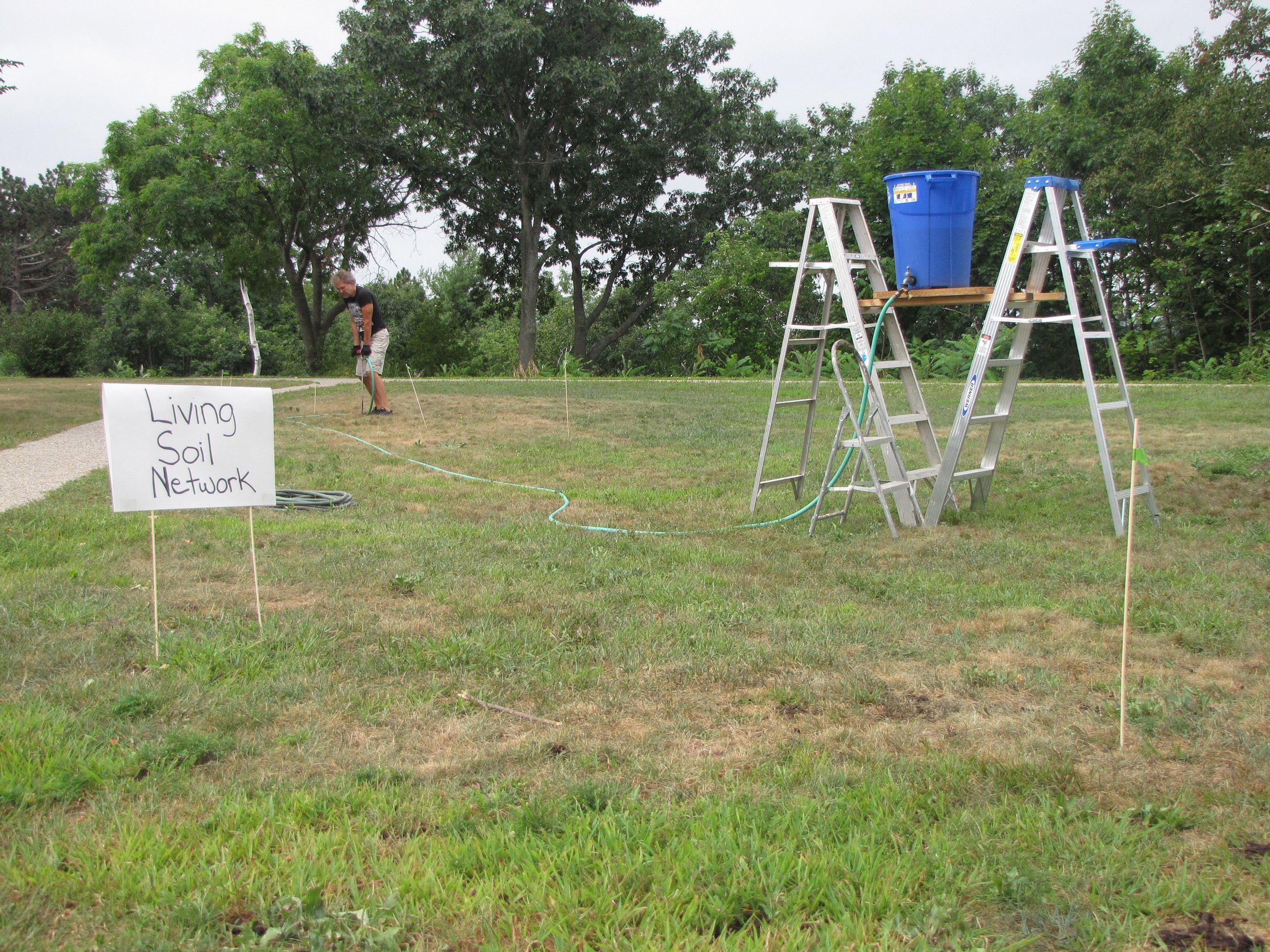Lawn Restoration in Portland’s Western Promenade
The purpose of this project is to educate the public by demonstrating that a very disturbed grassy area of a city park can be brought back to life using only microbial inoculants. In 2023, we will add interactive signage to the area. Passersby will be able to scan a QR code to access our website, where they will see photos taken of the actual microbes in the soil underneath their feet.
Continuing our partnership with the city of Portland’s Parks and Recreation Department, we will demonstrate the chemical and fertilizer free restoration of the Carrol Street Triangle Park, a section of Portland’s Western Promenade. The lawn in this area has been historically distressed with large patches of dead grass and many patches of weeds. Initially, we injected beneficial microbes down into the soil to begin to establish a healthy soil ecosystem.
Moving forward, we will add more beneficial microbes in the form of repeated soil drenches and sprayed compost teas. This project is particularly challenging because the topsoil is very thin and was spread over imported rough fill. Since there is no irrigation system, the entire Western Promenade’s lawns become distressed during the dry summer months. With time and continued applications, the grass roots in this area will extend down into the coarse substrate. This will greatly enhance the water retention capacity of the grass root system. It is well documented that an increase in soil fungi levels corresponds to greater holding power of soil moisture. Technically speaking we are attempting to extend the ecosystem health and depth of both A and B soil horizons.
We asses our progress mainly through direct microscopy. We also use root depth analysis and water infiltration tests. We are happy to report that so far, both the appearance of the turf grass and the biological health of the soil itself has improved. The triangle area no longer appears to be the worst area in the park and, in fact, appears slightly better than the surrounding areas. The baseline examinations from 2021 revealed some pathogenic fungi, high levels of bacteria and no protozoans. Currently, we are seeing few pathogens, less bacteria, and increased levels of beneficial fungi and beneficial soil predators. As microbial colonization increases, and soil ecosystem health improves, we expect to see continual improvement in the visible appearance of the area.

